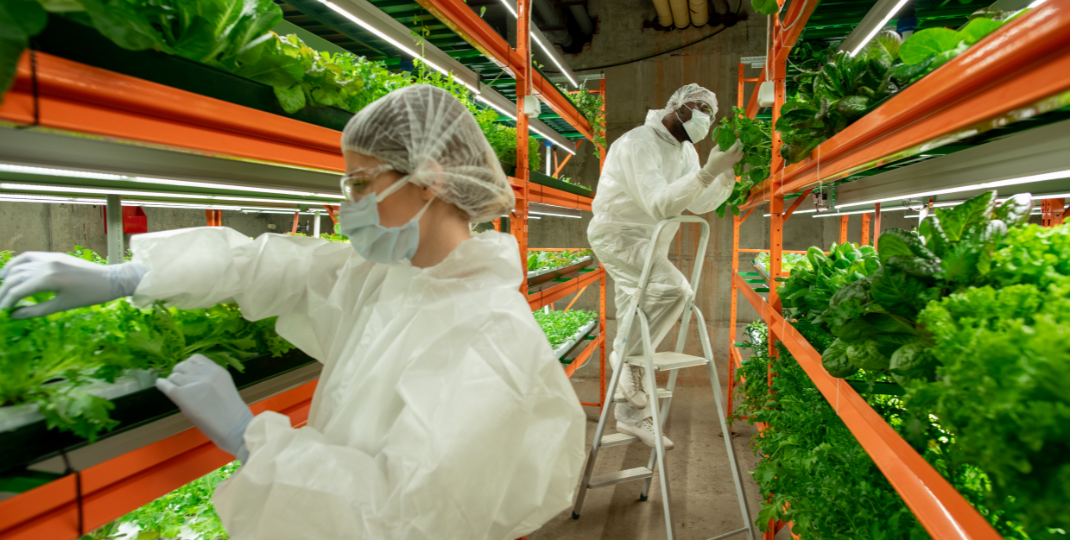Business investment opportunities are abundant in today's market, with a wide array of industries and sectors to choose from. One such opportunity that has been gaining attention lately is cultivated steak. As consumers increasingly prioritize sustainability and ethical practices, the demand for alternative protein sources has been on the rise. Cultivated steak, also known as lab-grown or cell-based meat, offers a compelling solution to this growing demand. By investing in this innovative technology, entrepreneurs can tap into a lucrative market that not only addresses environmental concerns but also provides a healthier and more humane option for meat consumption. With numerous companies entering the space and advancements in scientific research, now is an opportune time to consider investing in the future of food production with cultivated steak.

What are the potential risks and challenges associated with investing in cultivated steak businesses?
Investing in cultivated steak businesses comes with several potential risks and challenges. One of the main risks is the uncertainty surrounding the regulatory environment. As this industry is relatively new, there may be challenges in obtaining necessary approvals and navigating through complex regulations. Another challenge is the high upfront costs associated with setting up a cultured meat production facility. The technology and infrastructure required for producing cultivated steak at scale are still developing, which can lead to cost overruns and delays. Additionally, the consumer acceptance and market demand for lab-grown meat are uncertain, which could affect the profitability and long-term viability of such investments. Lastly, competition within the industry is expected to increase, potentially leading to lower prices and squeezed profit margins. Overall, investing in cultivated steak businesses requires careful consideration of these risks and challenges.

How will the market for cultivated steak products evolve in the coming years, and what factors may influence its growth?
The market for cultivated steak products is expected to evolve significantly in the coming years. With advancements in technology and increased consumer demand for sustainable and ethical food options, the growth of cultivated steak is likely to increase rapidly. Factors that may influence its growth include the development of scalable production methods, improvement in taste and texture, reduction in production costs, regulatory support, and consumer acceptance and awareness of the benefits of cultivated meat such as reduced environmental impact and animal welfare concerns. Additionally, partnerships between traditional meat companies and cultivated meat startups, as well as investments from major players in the food industry, will also play a crucial role in driving the growth of this market.
What is the current regulatory landscape for cultivated meat, and how might it impact business investment opportunities?
The current regulatory landscape for cultivated meat is rapidly evolving as authorities around the world are developing frameworks to ensure the safety and labeling of these products. Different countries have different approaches, with some considering cultivated meat as a novel food, while others see it as an extension of existing regulations for conventional meat. The impact on business investment opportunities will largely depend on how supportive and streamlined the regulatory processes become. Clear and efficient regulations can provide certainty and confidence for investors, enabling them to make long-term commitments and allocate resources towards research, development, and scaling up production. Conversely, overly burdensome or uncertain regulations may hamper investment, slow down innovation, and limit market access for cultivated meat companies. A favorable and predictable regulatory environment that balances safety requirements with fostering innovation could significantly enhance business investment opportunities in the cultivated meat sector.
Are there any ethical concerns or controversies surrounding the production and consumption of cultivated steak that could affect its market viability?
There are several ethical concerns and controversies surrounding the production and consumption of cultivated steak that could potentially affect its market viability. One major concern is the use of animal cells in the lab to produce meat, which raises questions about the welfare of animals and the potential for mistreatment in cell collection processes. Additionally, there are debates about the environmental impact of large-scale cell culture and the use of resources such as land, water, and energy. Some argue that cultivated steak could contribute to reducing the negative environmental footprint of traditional livestock farming, while others question the long-term sustainability and efficiency of lab-grown meat. Furthermore, there are also concerns about the potential health risks and safety regulations surrounding the production process. These ethical considerations and controversies might impact consumer acceptance, regulatory approval, and market adoption of cultivated steak.
What are the key technological advancements required for scaling up cultivated steak production, and what are the associated investment implications?

The key technological advancements required for scaling up cultivated steak production include improvements in cell culturing techniques, development of scalable bioreactors, optimization of cell culture media and scaffolds, and automation of the production process. These advancements are necessary to increase yield, reduce costs, and improve efficiency in producing large quantities of cultivated steak. Additionally, investments in research and development, infrastructure, and equipment will be required to support the implementation of these technologies. Investment implications include the need for funding to support ongoing research and development efforts, the establishment of large-scale production facilities, and the adoption of automation and AI technologies to streamline production processes. Furthermore, there may be opportunities for investment in companies involved in supply chain management, distribution, and marketing of cultivated steak products.

How do consumer attitudes and preferences towards cultivated steak differ business investment opportunities and cultivated steak from conventional meat, and what does this mean for market potential?
Consumer attitudes and preferences towards cultivated steak differ from conventional meat in various ways. Firstly, consumers perceive cultured steak as a more sustainable and ethical alternative to conventional meat due to its reduced environmental impact and avoidance of animal slaughter. Additionally, cultivated steak is often seen as healthier because it is free from antibiotics and hormones commonly found in conventionally raised animals. However, some consumers may have concerns about the safety and taste of cultured steak, as well as its price compared to conventional meat. These differing attitudes and preferences towards cultivated steak imply that the market potential for this product may be influenced by factors such as consumer education, pricing strategies, taste improvements, and regulatory support. Overall, understanding and addressing these consumer attitudes and preferences are crucial for determining the market potential of cultivated steak.
Are there any potential barriers to entry in the cultivated steak industry that could affect the profitability and sustainability of investments?
There are several potential barriers to entry in the cultivated steak industry that could impact profitability and sustainability of investments. Firstly, one major barrier is the high cost of research and development required to develop the technology needed for cultured meat production. This significantly limits the number of companies that can enter the market. Additionally, the regulatory framework surrounding the approval and safety of cultured meat products is still being developed, which creates uncertainty and may slow down market entry. Another challenge is the scalability of production. As the industry is still in its infancy, scaling up production to meet consumer demand at an affordable price remains a significant hurdle. Lastly, consumer acceptance and perception of cultured meat may pose a barrier, as some individuals may have reservations about consuming lab-grown meat. Overcoming these barriers will be crucial for the long-term profitability and sustainability of investments in the cultivated steak industry.

How can businesses effectively differentiate themselves and build a competitive advantage in the growing cultivated steak market?

Businesses in the growing cultivated steak market can effectively differentiate themselves and build a competitive advantage by focusing on several key strategies. Firstly, they can emphasize their unique production methods and highlight the benefits of lab-grown steak, such as its sustainability and ethical considerations. Secondly, businesses can invest in research and development to continuously improve the taste, texture, and nutritional value of their cultivated steak, providing a superior product compared to competitors. Additionally, they can create strong partnerships and collaborations with industry experts, including chefs and nutritionists, to enhance their brand credibility and expertise. Finally, effective marketing campaigns that target environmentally-conscious consumers and promote the health and safety aspects of cultivated steak can also help businesses stand out in the market and gain a competitive edge.
The Benefits of Consuming Enough Mycoprotein for a Balanced Diet
### The Lucrative Intersection: Business Investment Opportunities in Cultivated Steak

In conclusion, business investment opportunities in cultivated steak present an exciting and promising prospect for investors. As the demand for sustainable and ethically-produced meat continues to rise, this innovative technology offers a viable solution that addresses environmental concerns and animal welfare issues. With advancements in cellular agriculture and increased consumer acceptance, cultivated steak has the potential to revolutionize the food industry and create lucrative returns for early investors. By supporting companies at the forefront of this cutting-edge technology, investors can contribute to a more sustainable future while capitalizing on a rapidly growing market. Ultimately, business investments in cultivated steak offer both financial rewards and the opportunity to make a positive impact on our planet's resources and animal welfare.